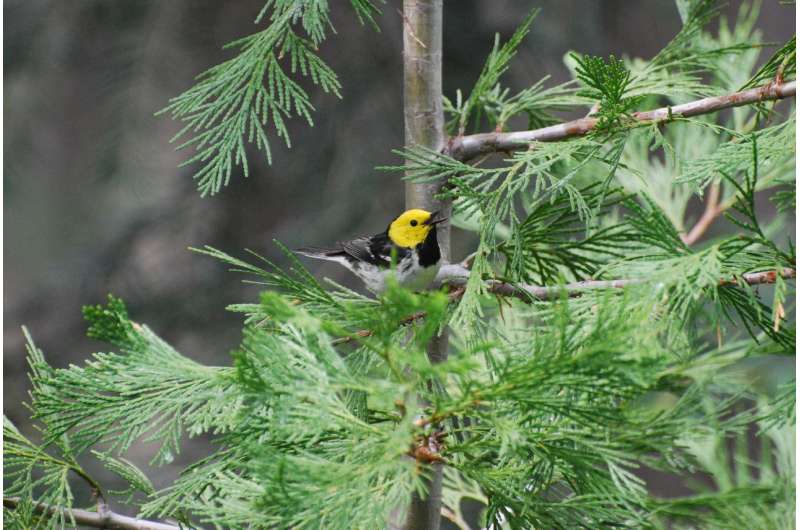Timing of spring birdsong provides climate insights

Climate change has scientists worried that birds' annual migration and reproduction will be thrown out of sync with the seasons. Because birds' songs are correlated with their breeding behavior and are easily identifiable to species, monitoring birdsong can be a good way to keep tabs on this possibility, and a new study from The Condor: Ornithological Applications takes advantage of this approach to provide new baseline data for the birds of northern California.
The California Department of Fish and Wildlife Brett Furnas and William Jessup University's Michael McGrann analyzed data from two bird survey programs from California's Klamath Mountains and Southern Cascades, both of which used automated recorders to monitor bird sounds between 2009 and 2011. In addition to providing the first comprehensive assessment of songbird occupancy over a 40,000 square kilometer region of northern California, they were able to identify the precise dates of peak vocal activity for eight songbird species, and their work shows that this will be a feasible method to track advances in the timing of vocal activity over the coming decades. Species characterized by strong single peaks in vocal activity already tended to reach those peaks later than other species, perhaps because birds with tightly constrained timing are less able to adapt to changing climatic conditions.
"Climate change is disrupting songbird populations, distributions, and breeding behaviors in our mountain ecosystems. Mountains are particularly sensitive because temperature and precipitation interact in complex ways on mountains," says McGrann. "If Neotropical migrants are unable to adjust their breeding behaviors, then there may be a mismatch in the timing of raising their young to the peak availability in food resources, namely insects. Our technique should allow us to track shifts in elevation, changes in the state of the population, and changes in breeding behaviors in response to climate change over the next ten to twenty years."
"Furnas and McGrann provide a textbook example of how to detect differences in the timing of nesting among bird species using information on the peak date of singing derived from surveys and automated recorders," according to UC Berkeley's Steve Beissinger, an expert on avian phenology who was not involved in the study. "Their results support recent findings of a five to twelve day shift forward in the timing of peak singing by California birds in the nearby Sierra Nevada and coastal ranges in response to climate change."
More information: "Using occupancy modeling to monitor dates of peak vocal activity for passerines in California" January 17, 2018, DOI: 10.1650/CONDOR-17-165.1
Provided by American Ornithological Society


















